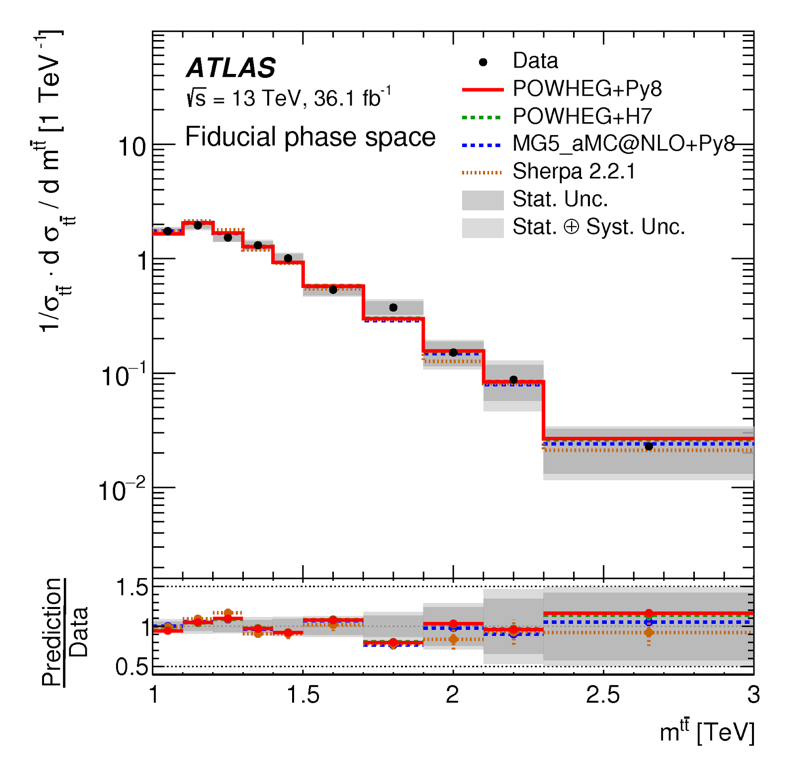ATLAS studies the dynamics of very high-momentum top quarks
31 January 2018 | By

The top quark – the heaviest known fundamental particle – plays a unique role in high-energy physics. Studies of its properties have opened new opportunities for furthering our knowledge of the Standard Model. In a new paper submitted to Physical Review D, the ATLAS collaboration presents a comprehensive measurement of high-momentum top-quark pair production at 13 TeV.
Studies of high-momentum top-quark pairs are challenging, as it is a channel with significant background. The new ATLAS measurement uses a pioneering method taking advantage of a relativistic effect known as a “Lorentz boost”. Physicists identified a “large-radius jet” inside the detector, the result of a very high momentum top-quark pair decaying into a bundle of quarks.

Measuring the kinematic properties of the large-radius jet allowed ATLAS physicists to understand those of the top quark from which it originated. This simplified the reconstruction of each of the two top quarks, and also improved the accuracy with which theoretical predictions could be compared with observations. Furthermore, by looking at the pattern of energy distributed inside the jet and differentiating the decay products of each top quark, it was possible to tame the enormous background generated by much more frequent (but here unwanted) two-jet interactions.
In the new paper, the probability of producing a top-quark pair is studied as a function of the momentum, invariant mass and angular variables describing the two top quarks. The measured distributions are compared to several calculations that take into account quantum mechanical effects such as the emission of radiation associated with the top quarks, or loops of virtual particles. The results show that current calculations predict more top quarks at very high momentum than are observed, confirming and improving upon previous measurements published by both the ATLAS and CMS experiments. Remarkably, the invariant mass of the two top quarks is also examined with an unprecedented statistical precision at masses exceeding 2 TeV. These arise in proton-proton collisions where about 20% of the collision energy has gone into the creation of the two top quarks.
ATLAS physicists also studied the angular correlations of the two top quarks for signs of new physics processes. They were found in agreement with the Standard Model prediction, albeit some disagreement was observed in the kinematic distributions associated with the particles recoiling from the top-quark pair. While the overall number of top-quark pairs is lower than the prediction, the difference is not statistically significant when taking into account the (larger) uncertainties coming from the theory itself.
The new ATLAS observations highlight the need for even more accurate theoretical calculations, a better understanding of the sources of uncertainty and, of course, more data! Physicists, theorists and engineers are hard at work on all three fronts.
Links:
- Measurements of tt¯ differential cross-sections of highly boosted top quarks decaying to all-hadronic final states in proton-proton collisions at 13 TeV using the ATLAS detector (arXiv:1801.02052, see figures).
- Measurements of top-quark pair differential cross-sections in the lepton+jets channel in proton-proton collisions at 13 TeV using the ATLAS detector (JHEP 11 (2017) 191, see figures).
- Measurements of top-quark pair differential cross-sections in the eμ channel in proton-proton collisions at 13 TeV using the ATLAS detector (Eur. Phys. J. C77 (2017) 299, see figures).
- See also the full lists of ATLAS Conference Notes and ATLAS Physics Papers.



